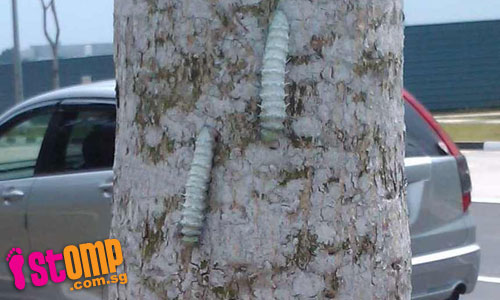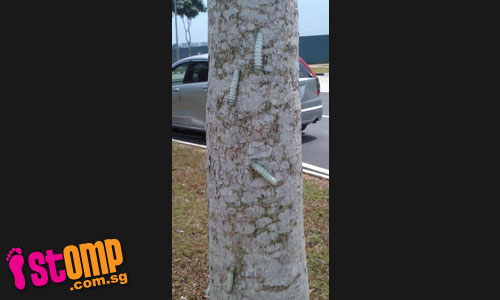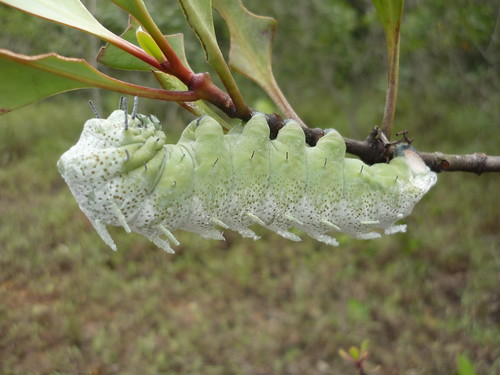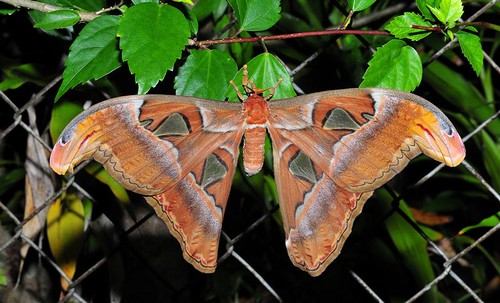
These huge, green caterpillars were seen crawling all over a tree at Tampines Industrial Avenue 10.
STOMPer Jenny wonders what type of butterflies these gigantic caterpillars will transform into.
She says:
"These creepy crawlies are all over the pathway and on the bare tree.
"These light green, huge caterpillars are invading the tree.
"What kind of butterfly they will transform into is unknown."

These are most likely the caterpillars of the atlas moth (Attacus atlas).

Pulau Ubin;
Unlike the caterpillars of many other species of butterflies and moths, which can be extremely choosy about their diet, the caterpillar of the atlas moth is not a fussy eater at all. From time to time, the caterpillars hatch in large numbers. Such sudden infestations are not uncommon, and it is possible to encounter defoliated trees in our neighbourhoods, having been stripped of their leaves by hordes of hungry caterpillars.

Pasir Ris;
(Photo by Ria)
The pupal stage lasts about 4 weeks. Despite their size, the pupae are often well-hidden and difficult to spot. In Taiwan, the cocoons are actually made into small purses, while in parts of northern India, the silk from atlas moth cocoons is gathered and spun into threads, and is known as Fagara silk.

(Photo by NatureInYourBackyard)
The atlas moth does all its feeding when it's a caterpillar; as an adult, the moth completely lacks mouthparts! The adult moth's sole priority in life is reproduction, surviving for 1 to 2 weeks solely on the fat reserves accumulated when it was a caterpillar.

Chek Jawa;
(Photo by Marcus)
In its adult form, the atlas moth is the world's largest moth, in terms of wing surface area. It is a relatively common species that can be found in our urban parks and gardens, and even occasionally enters homes. Yet many Singaporeans still seem quite unaware that Singapore is actually home to one of the giants of the insect world.